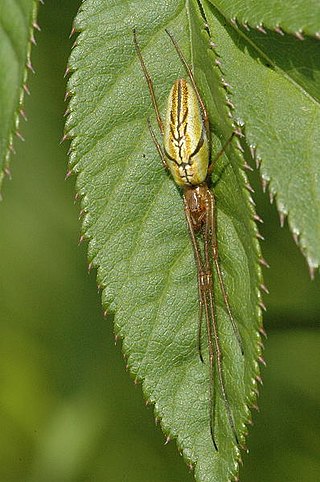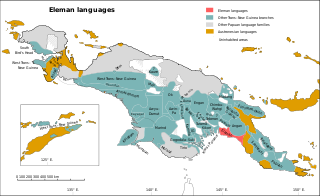
Papua New Guinea is a country in Oceania that comprises the eastern half of the island of New Guinea and its offshore islands in Melanesia. Officially the Independent State of Papua New Guinea, it shares its only land border with Indonesia to the west and it is directly adjacent to Australia to the south and the Solomon Islands to the east. Its capital, located along its southeastern coast, is Port Moresby. The country is the world's third largest island country, with an area of 462,840 km2 (178,700 sq mi).

Melanesia is a subregion of Oceania in the southwestern Pacific Ocean. It extends from New Guinea in the west to the Fiji Islands in the east, and includes the Arafura Sea.

The Ramu River is a major river in northern Papua New Guinea. The headwaters of the river are formed in the Kratke Range from where it then travels about 640 km (398 mi) northwest to the Bismarck Sea.

Samarai is an island and former administrative capital in Milne Bay Province, Papua New Guinea.

Nepenthes neoguineensis is a tropical pitcher plant native to the island of New Guinea, after which it is named.

Tetragnatha is a genus of long-jawed orb-weavers found all over the world. It was first described by Pierre André Latreille in 1804, and it contains hundreds of species. Most occur in the tropics and subtropics, and many can run over water. They are commonly called stretch spiders in reference to their elongated body form and their ability to hide on blades of grass or similar elongated substrates by stretching their front legs forward and the others behind them. The name Tetragnatha is derived from Greek, tetra- a numerical prefix referring to four and gnatha meaning "jaw". Evolution to cursorial behavior occurred long ago in a few different species, the most studied being those found on the Hawaiian islands. One of the biggest and most common species is T. extensa, which has a holarctic distribution. It can be found near lakes, river banks or swamps. Large numbers of individuals can often be found in reeds, tall grass, and around minor trees and shrubs.

Hendrikus Albertus Lorentz was a Dutch explorer in New Guinea and diplomat in South Africa.

Sir George Hamilton Kenrick FRES was an English entomologist who specialised in Lepidoptera especially those of New Guinea. He was a prominent liberal educationist and was a councillor in Birmingham.

The Eleman languages are a family spoken around Kerema Bay, Papua New Guinea.

New Guinea is the world's second-largest island, with an area of 785,753 km2 (303,381 sq mi). Located in Melanesia in the southwestern Pacific Ocean, the island is separated from Australia by the 150-kilometre wide Torres Strait, though both landmasses lie on the same continental shelf. Numerous smaller islands are located to the west and east. The island's name was given by Spanish explorer Yñigo Ortiz de Retez during his maritime expedition of 1545 due to the resemblance of the indigenous peoples of the island to those in the African region of Guinea.

Caprinia is a genus of moths of the family Crambidae.
Jativa castanealis is a species of moth of the family Crambidae. It is the only species in its genus, which is found in North America, where it has been recorded from Arizona, New Mexico and Texas.
Emmalocera castanealis is a species of snout moth in the genus Emmalocera. It was described by George Hampson in 1912. It is found in Malawi and South Africa.

The Erionotini are a tribe of skipper butterflies in the subfamily Hesperiinae.

Orthaga castanealis is a species of snout moth in the genus Orthaga. It was described by George Hamilton Kenrick in 1907, and is known from Papua New Guinea.

Caprinia unicoloralis is a species of moth of the family Crambidae. It was described by George Hamilton Kenrick in 1907 and it is found in Papua New Guinea.

Caprinia versicolor is a species of moth of the family Crambidae. It was described by Arnold Pagenstecher in 1900 and it is found in Papua New Guinea.
Caprinia felderi is a moth in the family Crambidae. It was described by Julius Lederer in 1863. It is found in India (Assam), on Java and Ambon Island, as well as in Australia, where it has been recorded from Queensland.
Caprinia periusalis is a moth in the family Crambidae. It was described by Francis Walker in 1859. It is found in Venezuela.
Caprinia trichotarsia is a moth in the family Crambidae. It was described by George Hampson in 1912. It is found in Papua New Guinea.















